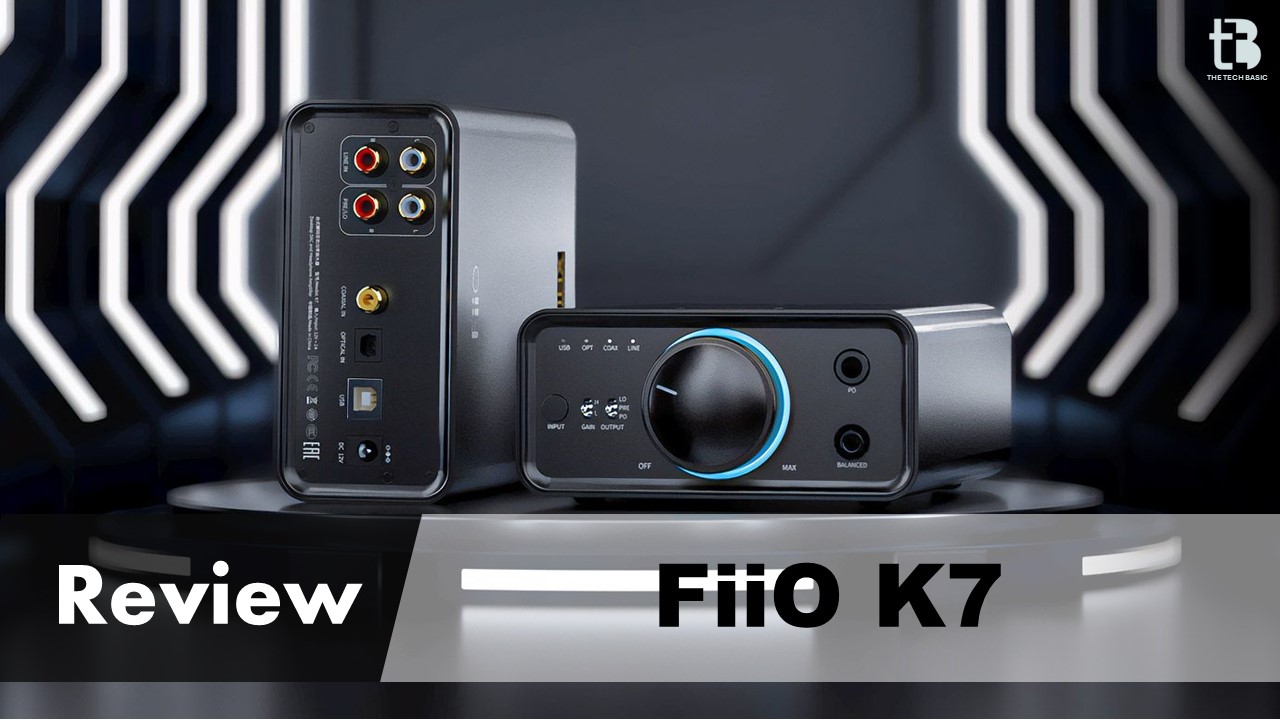In the ever-expanding world of audio equipment, the FiiO K7 has emerged as a significant player in the desktop DAC/AMP market. This device promises to deliver high-quality audio performance, offering a compelling blend of features, build quality, and affordability. Designed to enhance your computer’s audio output, the FiiO K7 stands out for its impressive capabilities, making it a strong contender for anyone looking to upgrade their desktop audio setup. In this review, we’ll delve into the FiiO K7’s design, performance, connectivity options, and overall value, providing a comprehensive analysis of what makes this DAC/AMP a noteworthy choice.
TheTechBasic Verdict
The FiiO K7 is a standout choice for anyone looking to upgrade their desktop audio setup without breaking the bank. At $199, it offers impressive value with its robust build, sleek design, and high-quality components. Featuring dual AK4493SEQ DAC chips and THX AAA 788+ amplifier modules, the K7 delivers clean, detailed sound with a wide soundstage and excellent stereo separation. Its connectivity options are comprehensive, including USB, coaxial, optical, and analog inputs, making it versatile enough for various audio sources.
Please follow us on Facebook and Twitter.
While the volume knob could benefit from a more linear control, this minor issue doesn’t overshadow the K7’s strengths. Compared to competitors, it holds its own by providing performance that rivals more expensive models. The K7’s affordability, combined with its ability to handle high-resolution audio and drive-demanding headphones, makes it a compelling choice for both audiophiles and casual listeners. Overall, the FiiO K7 stands as an exceptional value in the desktop DAC/AMP market, delivering high-quality audio and versatile features at a reasonable price.
Pros
- Durable construction with a tactile volume control knob
- Exceptional audio clarity and detail
- Includes both 4.4mm balanced and ¼-inch (6.35mm) unbalanced headphone outputs
Cons
- LED light surrounding the volume knob cannot be turned off
- Lacks support for MQA files
- Matte surface tends to attract fingerprints
Technical Specification
Key Specifications
| Feature | Specification |
| Form Factor | Desktop |
| Converter Type | Digital-to-Analog Converter (DAC) |
| Number of Channels | 2 channels |
| Maximum Sampling Rate | 384 kHz / 32-bit |
| Number of Microphone Inputs | None |
| I/O Analog Audio | 2x RCA Coaxial Line/Stereo Input 2x RCA Coaxial Line/Stereo Output 1x 1/4″ Headphone Output/ TRS Unbalanced Line 1x 4.4 mm Headphone Output/TRS Balanced Line |
| I/O Digital Audio | 1x S/PDIF Input of TOSLINK Optical 1x S/PDIF Input of RCA Coaxial |
| DAC Chipset | 2x AKM AK4499 |
| Display | None |
| Host Connection Protocol | USB 2.0 |
| USB (Non-Host) | 1x USB-B (Digital Input) |
| Phantom Power | No |
| Sync I/O | None |
| Network I/O | None |
| MIDI I/O | None |
| Expansion Slots | None |
| Wireless | No |
Performance Specifications
| Feature | Specification |
| Frequency Response | RCA Line Outputs: 20 Hz to 20 kHz ±0.4 dB (USB IN), ±0.8 dB (SPDIF IN) 1/4″ Outputs of Headphone: ±0.3 dB (USB IN), 20 Hz to 20 kHz ±0.7 dB (SPDIF IN) Balanced Headphone of 4.4 mm Outputs: ±0.3 dB (USB IN), 20 Hz to 20 kHz ±0.7 dB (SPDIF IN) |
| Output Maximum Level | Line RCA Outputs: 2 Vrms 1/4″ Outputs of Headphone: 18.9 V p-p Balanced Headphone of 4.4 mm Outputs: 37.7 V p-p |
| Headphone Output Power | 1/4″: 140 mW into 300 Ohms, 1220 mW into 32 Ohms 4.4 mm: 560 mW into 300 Ohms, 2000 mW into 32 Ohms |
| Impedance | 16 to 300 Ohms |
| SNR | Line RCA Outputs: dBA of 116 1/4″ Outputs of Headphone: ≥ 120 dBA (UAC), ≥ dBA of 128 (AUX IN), Balanced Headphone of 4.4 mm Outputs: 120 dBA (UAC), ≥ 128 dBA (AUX IN) |
| THD+N | Line RCA Outputs: 0.0005% 1/4″ Outputs of Headphone: 0.0003% Balanced Headphone of 4.4 mm Outputs: 0.0003% |
| Crosstalk | Line RCA Outputs: ≥ 102 dB 1/4″ Outputs of Headphone: ≥ 77 dB Balanced Headphone of 4.4 mm Outputs: ≥ 124 dB |
| Sample Rates | 44.1 / 48 / 88.2 / 96 / 176.4 / 192 / 352.8 / 384 kHz |
| Bit Depths | 24 / 32-bit |
| Sync Sources | None |
Compatibility
| Feature | Specification |
| OS Compatibility | Windows, macOS |
| Mobile App Compatible | No |
| Mobile Device Compatibility | No |
| Required Hardware | USB 2.0 Port |
Power
| Feature | Specification |
| Power Requirements | AC/DC Power Adapter (Included) |
| AC/DC Power Adapter | 12 VDC at 2 A (Included) |
Physical
| Feature | Specification |
| Weight | 21.5 oz / 610 g |
| Packaging Weight | 2.56 lb |
| Box Dimensions (LxWxH) | 9.1 x 8 x 3.2 inches |
Overview
The Device stands out as an excellent investment for those aiming to enhance their computer’s sound quality. Although it’s not designed for portability and is limited to boosting audio for wired headphones or in-ear monitors, it does offer the option to bypass the amplification for use with powered speakers via its analog output.
While high-end audiophiles often spend a fortune on similar devices, Fiio’s entry-level K7 presents an impressive value, offering performance that rivals much pricier DAC/amp units. Priced at $199, it provides exceptional audio enhancement capabilities for the cost. If you’ve invested in a quality couple of headphones, the Fiio K7 is a great way to maximize their potential and elevate your listening experience.
Design and Build Quality
The FiiO K7 immediately catches the eye with its sleek and modern design. Encased in a robust aluminum chassis, the K7 combines aesthetic appeal with durability. Measuring 2.2 inches in height, 4.7 inches in width, and 6.6 inches in depth, this unit is compact enough to fit comfortably on a desktop without overwhelming the space. Despite its modest size, the K7 manages to convey a substantial presence, weighing just 1.3 pounds.
The front panel of the K7 features a large, smooth volume knob that serves dual purposes: it powers the device on and off while also controlling the volume. This knob is encircled by an RGB light ring that visually indicates the audio signal’s resolution. A blue light signifies PCM signals below 48kHz, yellow for signals at 48kHz or higher, and green for DSD streams. This visual cue adds a layer of convenience and clarity to the user experience.
In addition to the volume knob, the front panel houses a series of buttons and switches. These include an input selector for toggling between USB, optical, coaxial, and RCA sources, as well as a three-way output switch that allows users to choose between the internal headphone amplifier, a flat line-out signal, or a volume-responsive line-out signal. The controls are intuitive and well-positioned, contributing to the overall ease of use.
The rear panel of the K7 is equipped with a variety of input and output options. Digital inputs include USB, coaxial, and optical ports, while analog RCA inputs provide the ability to connect sources like turntables or cassette players. The outputs consist of RCA analog outputs, which are useful for bypassing the internal amplifier and sending the decoded analog signal to powered speakers or an external amplifier. This range of connectivity options ensures that the K7 can integrate seamlessly into a wide array of audio setups.
One notable design choice is the inclusion of an external power brick. This helps to minimize internal electrical noise, which can contribute to cleaner sound reproduction. While the matte finish of the aluminum chassis is visually appealing, it does attract fingerprints, which may require occasional cleaning.
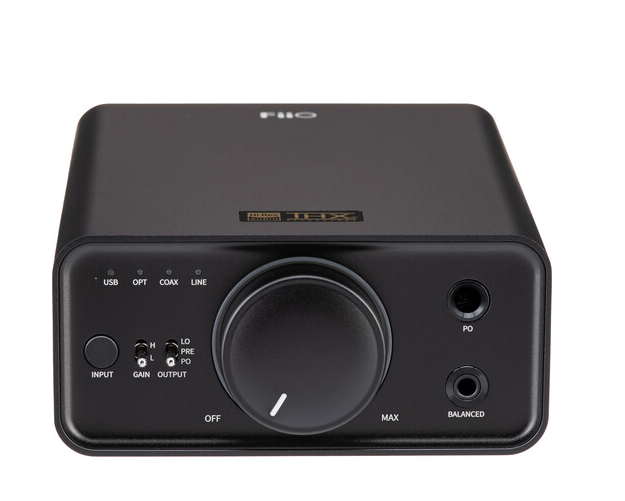
Components and Features
At the heart of the FiiO K7 are its impressive components. The device features dual AK4493SEQ DAC chips one for each channel ensuring high-quality digital-to-analog conversion. These DAC chips are known for their precision and accuracy, supporting PCM audio up to 32-bit/768kHz and DSD512. This capability allows the K7 to deliver exceptional sound quality, handling high-resolution audio formats with ease.
The K7 also integrates dual THX AAA 788+ amplifier modules, which are typically found in higher-end audio gear. These amplifier modules contribute to the K7’s ability to drive demanding headphones and deliver clean, powerful sound. FiiO has included six different audio circuits designed to reduce crosstalk, enhance signal purity, and ensure a clear and detailed listening experience.
In terms of connectivity, the K7 offers a comprehensive range of options. The USB input supports high-resolution audio up to 32-bit/384kHz, making it ideal for streaming high-quality files from your computer. The coaxial input handles PCM audio up to 24-bit/192kHz, while the optical input supports PCM audio up to 24-bit/96kHz. Notably, the K7 does not support the MQA standard, but this is becoming less relevant as streaming services like Tidal transition to FLAC files.
The device’s user interface is straightforward to navigate. The input selector button allows users to switch between different audio sources effortlessly. The three-way output switch provides flexibility in how the K7 is used, whether for driving headphones, sending a flat line-out signal, or using a volume-responsive line-out signal. The RGB light ring around the volume knob serves as a visual indicator of the audio signal’s resolution, adding an extra layer of convenience.
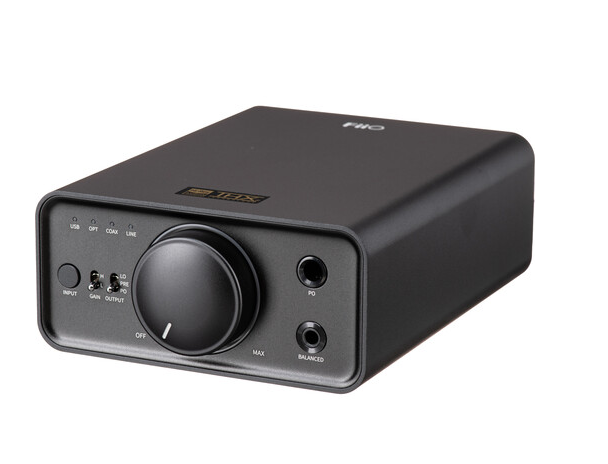
Performance and Sound Quality
When it comes to performance, the FiiO K7 truly shines. This DAC/AMP delivers a clean, detailed sound with impressive clarity and a wide soundstage. Whether you’re listening to classical music, rock, or electronic tracks, the K7 handles each genre with precision and depth.
During testing, the K7 was paired with high-quality headphones such as the Audeze MM-500 planar magnetic and the Sony MDR-7506 studio headphones. The results were impressive across the board. Classical tracks, like Scott Walker’s “Montague Terrace (In Blue),” showcased the K7’s ability to handle complex arrangements with remarkable clarity and space. The device provided a spacious soundstage and excellent stereo separation, allowing individual instruments and elements of the mix to be distinctly heard.
The K7’s performance with metal tracks, such as Slayer’s “Angel of Death,” was equally impressive. The device delivered powerful and precise sound, emphasizing the dynamics of the music without distortion. Even when compared to more expensive units like the $799 iFi Neo iDSD, the K7 held its own, offering a similar level of performance at a fraction of the cost.
One minor drawback noted during testing was the volume knob’s control. The volume increase is not linear, with a noticeable jump in loudness around 60%. While this may be a minor inconvenience, it is something that users can adapt to over time. For those who prefer finer volume adjustments, this aspect of the K7’s design may be a point of frustration.
Connectivity and Usability
The FiiO K7 excels in terms of connectivity and usability. Its range of inputs and outputs provides flexibility for various audio setups, making it a versatile choice for different needs. The USB, coaxial, and optical inputs ensure compatibility with a wide range of digital sources, while the analog RCA inputs offer additional connectivity options for older devices.
The K7’s user interface is designed for ease of use. The input selector button and three-way output switch are straightforward and responsive, allowing users to quickly switch between sources and adjust settings. The RGB light ring around the volume knob is a helpful feature, providing visual feedback on the audio signal’s resolution.
For those interested in wireless connectivity, FiiO offers the K7 BT model. Priced at $249, this version includes Qualcomm’s QCC5214 Bluetooth 5.1 chipset and supports high-quality codecs such as LDAC, aptX HD, and aptX Adaptive. The Bluetooth option adds convenience for streaming music from a smartphone or tablet, making it a practical choice for users who want to use the K7 with powered speakers or other wireless setups.
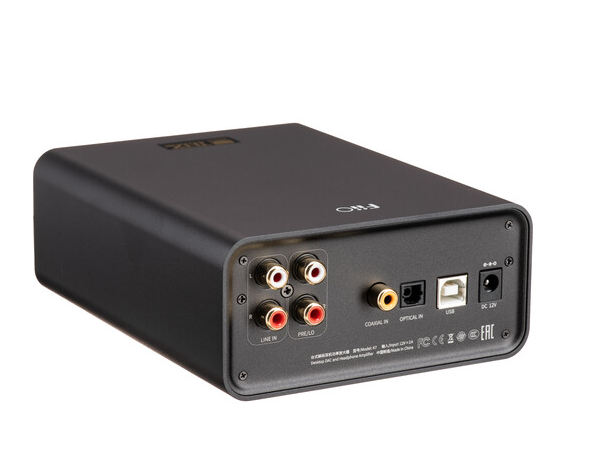
Comparing the K7 to Competitors
To better understand the FiiO K7’s position in the market, it’s useful to compare it with other DAC/AMP units. Key competitors include the Schiit Modius, Topping DX7 Pro, and SMSL M500.
Schiit Modius: The Schiit Modius is known for its excellent sound quality and robust performance. However, the K7’s compact design and additional features give it an edge in terms of versatility. The dual headphone outputs and integrated amplifier of the K7 make it a more flexible option for different headphone types.
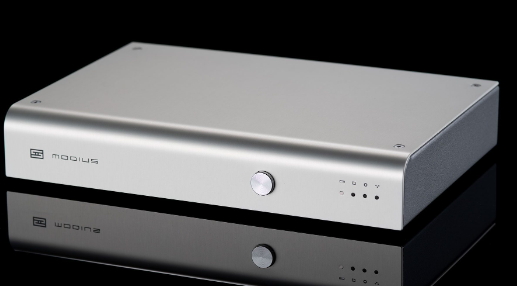
Topping DX7 Pro: The Topping DX7 Pro offers advanced features and a higher price point. While it provides additional performance benefits, the K7’s balance of quality and affordability makes it a strong contender in its price range. The K7’s performance is comparable to the DX7 Pro, offering a good mix of features and value.
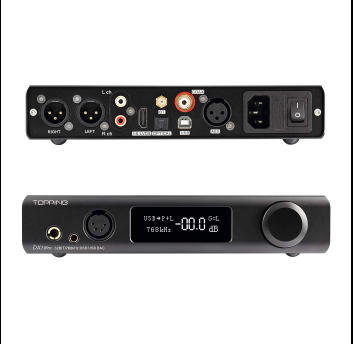
SMSL M500: The SMSL M500 is another competitor that offers similar features and performance. The K7’s build quality and user interface provide a slight advantage over the M500, though both devices deliver excellent sound quality. The choice between the K7 and M500 may come down to personal preference and specific needs.
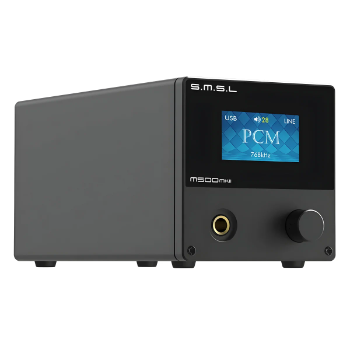
Value for Money
One of the most significant aspects of the FiiO K7 is its value for money. Priced at $199, the K7 offers exceptional performance and features at a competitive price point. It stands out as an entry-level DAC/AMP that can compete with more expensive models, providing high-resolution audio support, versatile connectivity, and a solid build.
For those looking to enhance their computer’s audio output without breaking the bank, the FiiO K7 is a compelling option. Its ability to drive demanding headphones, deliver clean sound, and integrate into various audio setups makes it a worthwhile investment. The K7’s performance and features offer a strong balance of quality and affordability, making it an attractive choice for audiophiles and casual listeners alike.
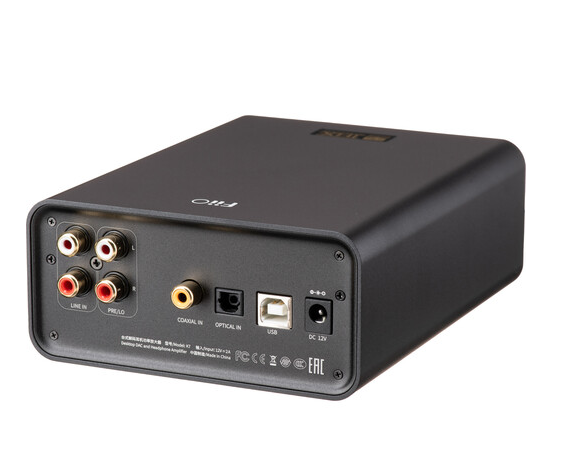
Is The Fiio K7 Worth Buying?
If you’re someone who enjoys music or video content at your desk, the Fiio K7 will significantly enhance your audio experience. I’ve utilized the K7 as a standalone external DAC in my home setup, connecting it between a WiiM Pro streamer and a Fosi Audio TB10D amplifier. However, if you only need a DAC and not a headphone amplifier, other options might be more suitable. Brands like Schiit and Topping offer excellent DACs around the $100 mark.
The Fiio K7 is user-friendly, delivers impressive audio detail for its price, and remains comfortable for extended listening sessions without causing ear fatigue. For those looking to elevate their headphone audio experience while keeping costs reasonable, the K7 is a solid choice.
Conclusion
In summary, the FiiO K7 is a remarkable DAC/AMP that delivers impressive performance and features at an affordable price. Its sleek design, robust build, and extensive connectivity options make it a versatile addition to any desktop audio setup. The K7 excels in sound quality, offering clean, detailed audio reproduction with a wide soundstage and dramatic stereo separation.
While the volume knob’s control could be finer, the K7’s overall performance and value outweigh this minor drawback. Compared to its competitors, the K7 holds its own, providing a strong mix of quality and affordability. Its ability to handle high-resolution audio, drive demanding headphones, and
offer versatile connectivity options making it a valuable choice for those looking to elevate their audio experience.
Whether you’re an audiophile seeking high-quality sound or a casual listener looking to upgrade your setup, the FiiO K7 promises to deliver exceptional performance and value. It stands as a testament to FiiO’s commitment to producing high-quality audio equipment that is both accessible and impressive. If you’re in the market for a desktop DAC/AMP that offers a solid mix of features, performance, and affordability, the FiiO K7 is a standout option that deserves consideration.

